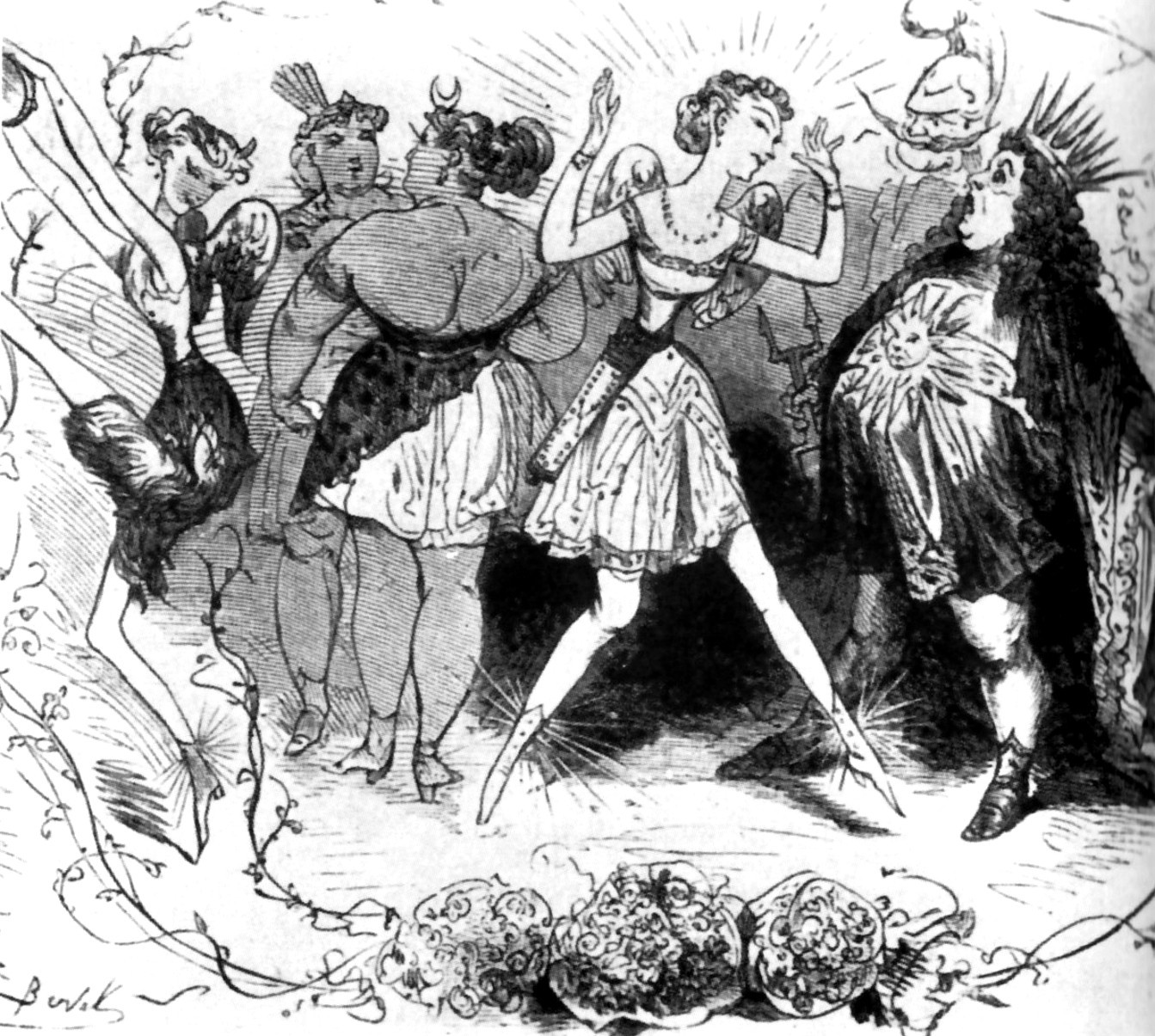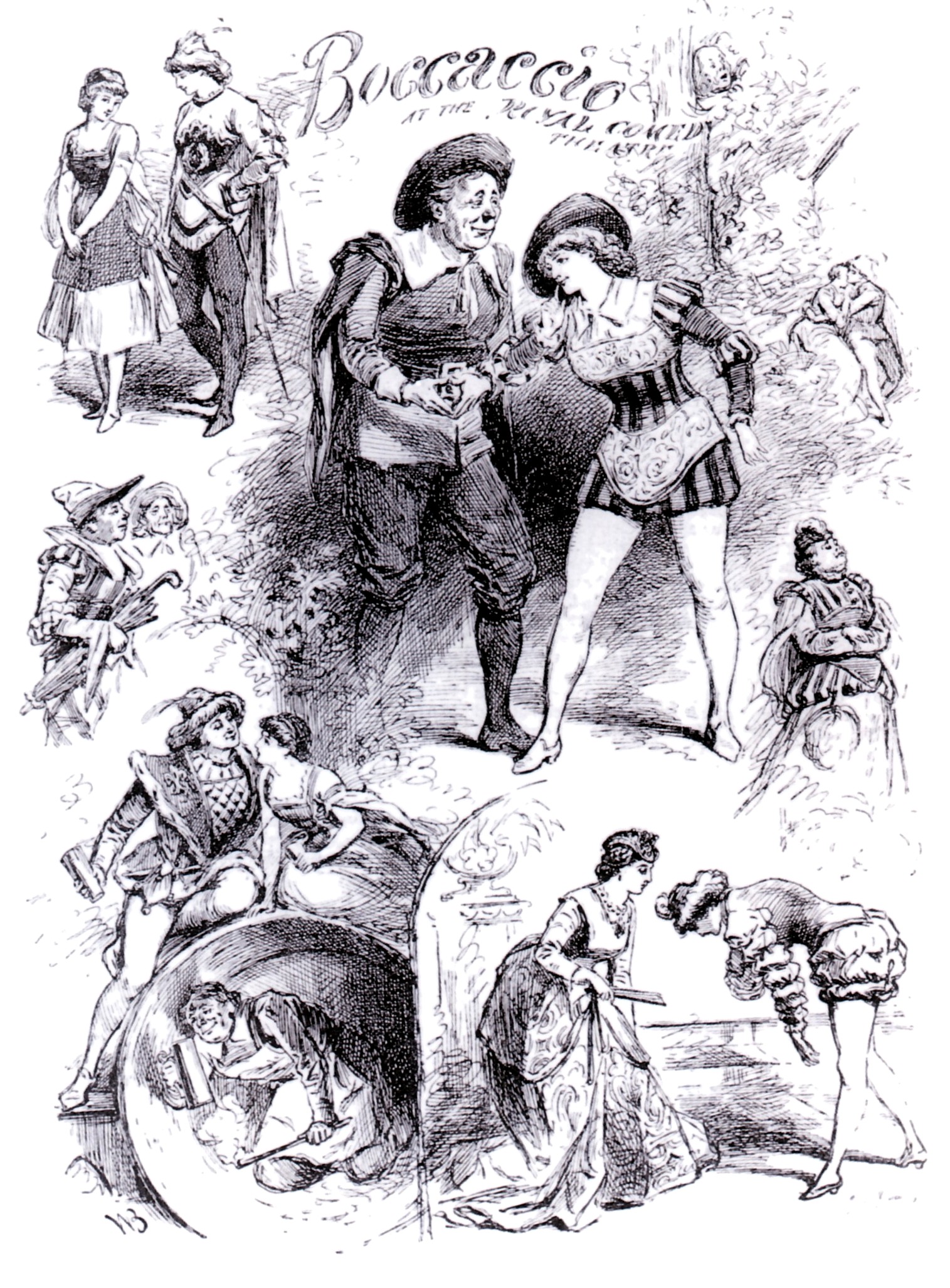Kevin Clarke
Operetta Research Center
19 February, 2018
The sensational success of Jacques Offenbach in Second Empire Paris and internationally, in the 19th century, has many reasons. One central aspect is that his contemporaries classified his novel form of musical entertainment as deeply ‘immoral,’ and even ‘dangerous.’ Certain self-declared moral guardians of society avoided all contact with Offenbach’s music, fearing it could reflect badly on their God fearing status as upright Christians, which is why Offenbach’s shows rarely succeeded at deeply bourgeois institutions such as the Opéra Comique or European court theaters (who mostly refused to play his works anyway). At the same time this aura-of-the-indecent brought hoards of amusement-seeking people to private theaters that functioned as a kind of brothel. At least that’s how Emile Zola describes it in his book Nana (1880). The 1877 edition of Meyers Konversations-Lexikon claims: “Most of [Offenbach's works] are so permeated with the spirit of the demi-monde that their salacious stories and sensual, mostly trivial melodies have a decidedly demoralizing effect on the audience at large.” One should keep this in mind while listening to the 14 mélodies presented here by Mariam Sarkissian and Fanny Crouet, accompanied by Daniel Propper at the piano.

The cover of the Brilliant Classics CD “Offenbach Mélodies.
These little songs are from the early stages of Offenbach’s career in the 1840s, when he was still new to Paris and tried to find his way into high society. The songs are wonderfully ingratiating salon pieces, and the salons they were first performed at might very well have been the salons of the famous courtesans of the day. In any case, the songs by the 20 year old Offenbach are all about the rise and fall of girls who gave their hearts (and bodies) to men too quickly and are left to lament the consequences. There are seduction scenes in the forest where red-headed Jeanne falls for the whispering of an irresistible hunter (Jeanne la rousse), but there is also the Ronde tyrolienne with clarinet accompaniment (and a yodel extra!) about Lisette. She, too, loses her honor after leaving her village and following an unnamed ‘great gentleman.’ It ends in tears and death.
It’s easy to imagine how the famous demi-mondaines of the day sang such songs for their guests and admirers. We shouldn’t forget that some of the grandes horizontales (about who Virginia Rounding wrote a fascinating book) were trained singers, like Cora Pearl, the later mistress of Emperor Napoleon III. She appeared in a revival of Offenbach’s Orpheus as a semi-nude Cupid. It caused a scandal and sensation, and it was a major box office attraction. (Because everyone who could afford it wanted to see the infamous Miss Pearl.)

Famed courtesan Cora Pearl as Cupid in the “Orphée” revival, Paris 1867.
Among the 14 pieces on this Brilliant Classics disc are also songs of jealousy and songs in which the male suitors are asked to marry their girls before tragedy ensues. There are also interesting gender-bending numbers in which the ladies slip into the roles of toreros etc. and parody typical macho flirting behavior. In his later stage works Offenbach – and his followers, such as Suppé and Strauss – made such numbers a regular early operetta feature. (Think of the glorious Boccaccio character where a soprano plays the swaggering hero with all of his laughable sexual self-assuredness.)

Poster for a “Boccaccio” production in London, 1882.
To hear all of these later success elements of operetta in embryo form in these 14 early songs is thrilling. The two soloists deliver them lively and with great charm, Mariam Sarkassian with opulent Russian mezzo tones that sometimes remind you a little too much of Dalila; but she lightens up as we go along and becomes more convincing in the latter tracks. Fanny Crouet, on the other hand, is a tripling soubrette and captures the French idiom better. Alas, her German in various songs is lamentable. But she has a pleasant ‘amateur’ quality to her singing that’s very fitting here.
None of the two soloists tries to play with the erotic or suggestive between-the-lines aspects of the texts. Which is a pity, because that would have made the lyrics a lot more interesting. Without such between-the-lines reading the texts seem mostly harmless and banal, which they shouldn’t be, and which is certainly not why Offenbach chose to set them to music on his way to the top. For example to sensual L’Etoile with a mavellous cello solo, probably played by Offenbach himself originally. In this song a star in the heavens is called upon to witness a ‘secret’ love; but there is not much secrecy in this performance. (Though a great cellist: Levon Arakelyan.) Also, lines about ‘lively birds’ that sit in the lap of men to sing their song ‘for large and small’ could be made more telling and meaningful. One doesn’t need much imagination to see what Offenbach hints at, or does one?

“The Dressing Room of Hortense Schneider,” 1873. Painting by Edmond Morin.
As a result, the songs on this disc – recorded in 2016 in Armenia at the Aram Khachaturian Concert Hall – lack context and aura. They also lack a desire to really tell the stories narrated in the poems by Aimé Gourdin, Théophile Gauthier, Arsène Houssaye, Charles Catelin etc.
Talking of poems: they are not included in the booklet, but you can download them as a PDF on the homepage of Brilliant Classics. There is only an English translation of the French originals (but no French version), and in the case of the German songs there’s only the German version, no translation at all. This is sad because it make is difficult for listeners who don’t speak the language in question to follow the stories. Apart from that, the PDF is not particularly attractive and contains many small typos. Considering that there is no space restriction in a download PDF, there is no reason for not giving us a full original text and all the necessary translations.
Nonetheless, this collection of 14 songs is a welcome addition to the Offenbach discography. Because it fills a gap and sheds a light on the early and not so well documented stages of Offenbach’s career.

Sheet music cover for Offenbach’s “Le mariage aux lanternes.”
The final duo bouffe on the disc, Meunière et fermiere (Mrs. Miller and Mrs. Farmer) composed in 1847, is irresistible. It’s about two ladies fighting over being ‘the first’ in their village – having more money, a better position, a better and more faithful husband etc. It’s similar to what Offenbach later did in his one-act opérette bouffe Le mariage aux lanternes in 1857. That show premiered at the Théâtre des Bouffes Parisiens, the notorious playground of Jockey Club dandies. For them, seeing two singers in revealing farm girl costumes on stage, pulling each other’s hair out, was not so far removed from what we cheer at today in Netflix series such as GLOW (Great Ladies of Wrestling).

Poster for the Netflix series “Glow” (Great Ladies of Wrestling).
A bit more of that GLOW touch would have done this CD and the soloists good, and that applies to the strange cover image as well. But it’s still huge fun to listen to these songs and their cheeky lyrics. And at least in Meunière et fermière Sarkassian and Crouet are in grand form and obviously enjoying themselves.
You can consider this CD release an early arrival for Offenbach’s 200th birthday in 2019. Let’s hope more such goodies will follow.

The most famous and successful of all the ‘Quarreling Duets’ since THE BEGGAR’S OPERA is actually due to another French author and composer, Clairville and Charles Lecocq: LA FILLE DE MADAME ANGOT. It’s a stunner.